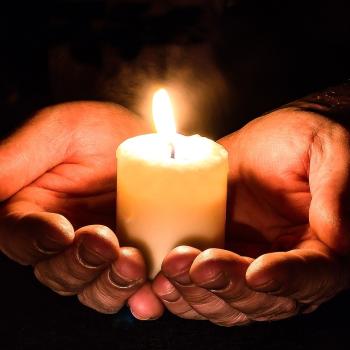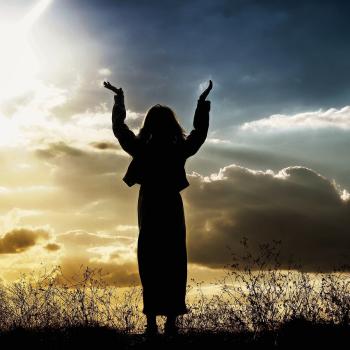
This series has covered a number of unconventional concepts. To briefly recap the factors essential to a new understanding of prayer and its practice:
- Consciousness is the ground of all being and exists on a continuum from universal to collective to individual
- The world of experience is a subset of a Cosmic Whole (rather than something from nothing)
- All possibilities coexist in parallel within this Whole
- The attention of an observing consciousness is the means of creation
- Reality as experienced is assembled moment-by-moment by consciousness — with local and cosmic aspects
- Shared experience in a stable, persistent world is a product of consciousness at the collective level
- Prayer 2.0: Events and phenomena at a more local or individual level may be amenable to alteration by individual, and especially collective, attention.
Weaving these together, consider the following as a possible new understanding of prayer: Not so much a superhuman entity, performing magic in violation of conventional physics, but a collective observational shift from one subset of event-histories to a parallel set with a more desirable outcome. In other words, prayer does not consist of exerting mechanical control over reality but rather in altering the probabilities of events that emerge from the superposition of all possibilities. (As quantum physics reveals, at the fundamental level, our experienced universe is probabilistic in nature.)
The latter may seem a bit undramatic after millennia of myths and legends of gods, witches, and wizards performing miracles that amaze and frighten the masses. (Not to mention contemporary superhero movies that portray the same with ever more vividness.) In contrast, after a successful shift to a parallel set of events, the new reality may simply appear in retrospect as a natural flow of events — something that could have happened, and now did happen. Something to be grateful for more than astounded by.
Implications for the Practice of Prayer
Traditionally, prayer (“1.0”) is thought of as a verbalized, rationally stated request or wish, to be implemented by a higher power with the agency to do so. Yet most earthly affairs exist in a great web of causes, effects, and implications — a great many of which may not be known at the time, Were some requests to be literally granted, the result might have problematic side-effects. For example, a common prayer request is for the restored health of a sick or disabled person. Yet if these were granted literally and 100% of the time, the world might quickly be overwhelmed with immortal people.
Accordingly, the 1.0 practice of prayer — essentially writing a new script for parts of reality — is likely not feasible or wise.
Perhaps because of this, more contemporary versions of prayer are less specific about particular outcomes, instead expressing an intention for happiness and wellbeing, metta (Buddhism), most benevolent outcome — or perhaps the least specific: “I”m holding you in the light”.
The Limits of Language
The challenge for any new, expanded vision of prayer (even for this paper) is that its nature is likely not wholly reducible to expression in words. It will likely be more experiential than descriptive. However, historically, we are attached — even required — to use verbal language as the means to conceptualize, understand, engage with, and communicate about the world and our experience within it. Philosopher Ludwig Wittgenstein pointed out a century ago that words are simply pointers to reality, not reality itself. Words and language are essentially a conceptual map to the world rather than the actual world.
Similarly, the physical sciences revolve around numerical and formulaic descriptions that point to the behavior of objects in the physical world yet cannot explain the why of their existence.
Despite this, down through the centuries, the course of science, philosophy, and to an unfortunate degree religion, has been to create ever more detailed, descriptive “maps”. Yet actual reality can never be pulled from a map, any more than a 3D virtual reality map of Paris or Bombay or Machu Picchu will ever be fully the same experience as actually being there,
Here then, is the challenge: the effectiveness of prayer (or any paranormal experience for that matter) likely occurs beyond the realm of conceptual thought — more a transcendental experience than a descriptive list of ideas or formulaic procedures.
Symbolically speaking, the mind is the home of abstract rationality, concept, and logic whereas the heart centers around living experience, feeling, and intuition. Especially in Western science, we tend to be comfortable in the former, and somewhat dismissive of the latter. Accordingly, Prayer 1.0 generally occurs as a set of rationally stated requests.
Yes, there may be instances when such prayer requests seem answered and supernatural, synchronistic occurrences seem to follow a rationally expressed intention. However, these apparent causes may simply be epiphenomenal to a deeper subtle process — one that we stumble upon randomly, if we kneel long enough on the prayer bench or sit on the meditation cushion.
Yet, how else might we pray?
In the next article in this series, we will explore non-conceptual prayer and the interface of prayer and experienced reality.












